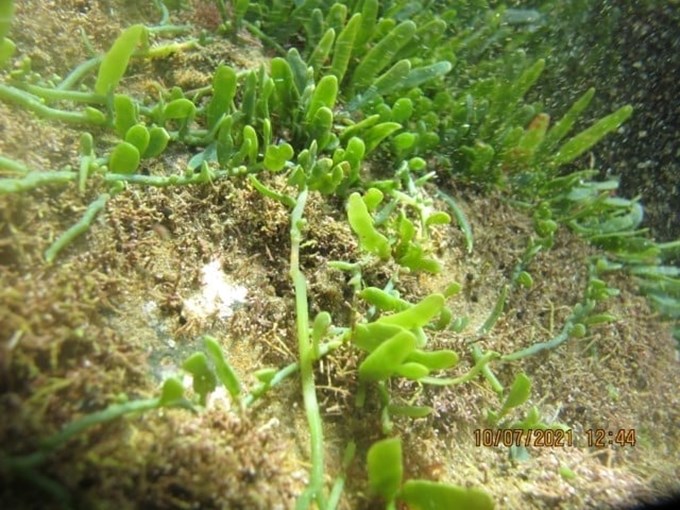An invasive seaweed that spreads rapidly, forming vast, dense beds has been discovered in waters surrounding Aotea Great Barrier Island.
Caulerpa brachypus, native to the Indo-Pacific region, has been found in Blind Bay and Tryphena and Whangaparapara harbours.
Biosecurity New Zealand is working closely with Aotea mana whenua and the local community, along with Auckland Council, Aotea / Great Barrier Local Board, and the Department of Conservation, in a collective response to the threat.
Biosecurity New Zealand’s Response Controller David Yard says it is not known how long the invasive species has been in Aotea Great Barrier Island, how it arrived or the full scale of the affected areas.
“In August, our contractors NIWA carried out a dive survey of Blind Bay, finding the seaweed to be widespread in the bay and also in Tryphena Harbour. Subsequently it was found in Whangaparapara Harbour.
“To minimise the spread of the seaweed, a Controlled Area Notice (CAN) is in place on the three harbours and will remain in force until June next year.
“Our partners in this work, Aotea mana whenua, have imposed a rāhui on the areas which took effect at the same time.”
Mr Yard explains that the Biosecurity New Zealand’s CAN makes it illegal to take any marine life (fish, shellfish, seaweed, crays) from any of the affected areas.
“Also, if you anchor a vessel in these harbours, you will need a permit from Biosecurity New Zealand to move on,” he says.
Conviction on charges of failing to comply with the CAN could result in a fine of up to $50,000 or up to 3 months imprisonment for an individual.
Aotea / Great Barrier Local Board Chair Izzy Fordham says that both the CAN and rāhui are important tools to stop the spread of Caulerpa brachypus.
“Caulerpa spreads easily by breaking into little pieces with fragments carried on coastal currents. This can happen by wave action but also when anchors and fishing gear are moved into or through seaweed beds.
“Pieces can get tangled in or stuck on equipment, like nets, dive and fishing gear, and cray pots. It can even survive out of water for up to a week or more if it's in a moist location like in an anchor locker or a bunched-up fishing net.
“It’s really important that we work together collectively to reduce this threat to our island and the mainland as much as we possibly can,” says Chair Fordham.
Deputy Chair of the response’s governance group and Deputy Chair of Ngātiwai Trust Board Martin Cleave says mana whenua have been working tirelessly with Biosecurity New Zealand to help prevent the unwanted organism from leaving the affected areas.
“The rāhui was put in place to keep the surrounding rohe moana free from this threat, and everyone has to play their part.”
This month, NIWA carried out work in Whangaparapara Harbour and Tryphena Harbour to attempt treatment of the invasive seaweed. Coarse sea salt was applied to some smaller affected areas to kill the seaweed by osmotic shock.
Unfortunately, due to the widespread infestation of Caulerpa in Blind Bay, there is currently no known practical way of removing it there.
An international group of technical experts on this seaweed and marine pest management is currently considering potential innovative ways to manage the situation.
Find out more about Caulerpa brachypus on Aotea Great Barrier Island, the CAN and rāhui and how you can help at Biosecurity New Zealand’s website.
If you have any questions about Caulerpa brachypus or want to receive regular updates, email Caulerpa2021.Liaison@mpi.govt.nz


